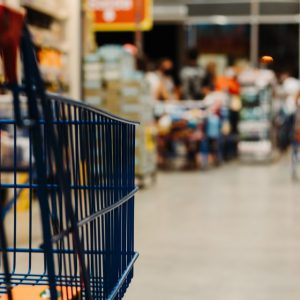
You’re sitting on the couch. Dinner time is just around the corner. The grocery store is only ten minutes away.
But let’s get real: you don’t feel like getting up.
Wouldn’t it be easier if someone could just bring you the food?
Right.
This is no longer “new” news.
Companies like Instacart, DoorDash and Grubhub have disrupted the food industry and caused a paradigm shift in the way we eat through our daily lives.
You are no longer required to get up off your couch and head to the store. Home grocery delivery companies have got you covered.
Feel like eating out at your favorite restaurant? Have it come to you instead.
The opportunities are endless. You can pretty much have whatever you’d like, delivered straight to your door.
And the past year with lockdown mania has amplified this with authority.
In this post-pandemic world, what now is the direction these door-to-door food behemoths will take?
Home Grocery Delivery Companies: The Bottom Line
 Being a consumer, we don’t normally think or care much about the bottom line of the company providing the food delivery service. All we do is pull up the app, load groceries in the virtual cart, check out and receive everything at the front door.
Being a consumer, we don’t normally think or care much about the bottom line of the company providing the food delivery service. All we do is pull up the app, load groceries in the virtual cart, check out and receive everything at the front door.
As long as our ripe tomatoes, mozzarella balls and pizza sauce arrive, we’re good to go.
But have you ever wondered what it actually takes for the company involved to make a profit for putting this food on your table?
This concern most likely hasn’t taken up many of your waking hours.
On the other hand, I guarantee you that this thought is of paramount importance to executives at such grocery delivery companies.
After all, they are the ones who have to hire the shoppers to cruise local aisles and bring goods to your door.
Once all the costs and fees are accounted for and totaled up, it can be quite a challenge for these companies to end up in the black.
Follow The Leader
It probably won’t take long to guess the identity of the largest online marketplace.
At the turn the century, most of us never would have expected a small online bookstore named after the largest river to now rule the online world.
What sets Amazon apart and puts them strides ahead of their competitors?
Well, a whole lot of things.
But as a consumer and Amazon client myself, I can tell you what impresses me.
Service.
You order something and it arrives. Fast.
You can buy something from Amazon days after you purchase something from another company and the item from Amazon STILL arrives first.
How do they do it?
Fulfillment Centers
You may have heard people toss around the phrase “Amazon fulfillment centers.”
Simply put, this is a giant warehouse that holds all your potential stuff.
You buy something on Amazon and the order gets fulfilled and shipped from these fulfillment centers.
By having full autonomy of their inventory, Amazon gets better margins and can exact direct control over delivery to their public.
Once your order is placed, as long as it’s coming from a fulfillment center, the shipping and handling is taken care of immediately.
As a comparison, look at the way Instacart has been operating:
The shopper gets an order and goes to the requested store.
On the way there, your diligent shopper wades through any traffic which exists at the time of your order.
The shopper then parks, navigates through the aisles of the store, scours the shelves to find replacements for missing items, checks out, gets back in the car and eventually makes it to your door.
What if instead of going to the store, all the driver had to do was show up at a fulfillment center and pick up a bag of groceries?
And if before the driver even got there, the items were picked and packed by a team of robots working hard to pluck items off the shelves?
Enter the future.
These grocery delivery companies have taken a cue from their own service of “groceries made easy” and decided to see how to make the process a bit easier for themselves too.
What Does This Mean For You?
That depends on who is reading this.
If you are a consumer and regular user of such services, this might not change things a whole lot for you.
Optimistically it could speed up delivery times and make grocery pricing a bit more competitive.
Or maybe the local robots will mess up your order and pack two guacamoles but leave out the sour cream.
On the other hand, if you are in a business that is connected in anyway to home grocery delivery, you will want to take note and find out everything you can about upcoming changes in this field.
A Final Note
While this article is specifically about food delivery, it’s important to also isolate the ramifications of these changes.
Major shifts in one industry cause ripple effects across the boards.
As the old saying goes, “a rising tide lifts all boats.”
Just as long as your boat doesn’t sink first.
Countless E-commerce and online ventures have been propelled by momentum from the giants.
Plenty of others have collapsed before even getting started.
Those who make it are organized and have their administrative lines in.
Successful companies know their inventory, keep it stocked and instantly fulfill all orders received.
The key is being able to track and control this process each step of the way.
Without doing so, you become lost in a sea of overdue and out-of-stock orders.




